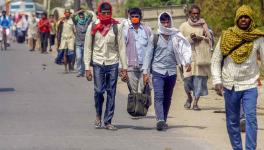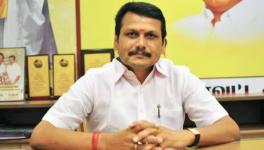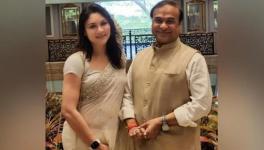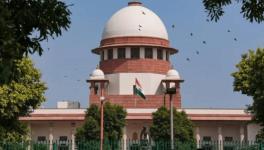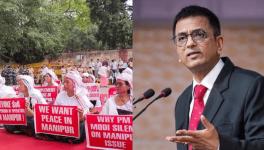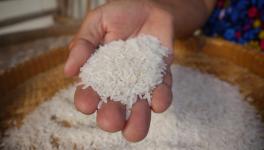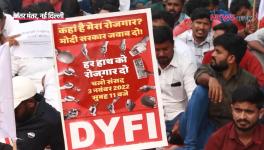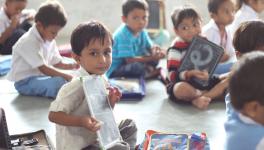Against Prophets of Doom: A Status Report on Experiments in Truth
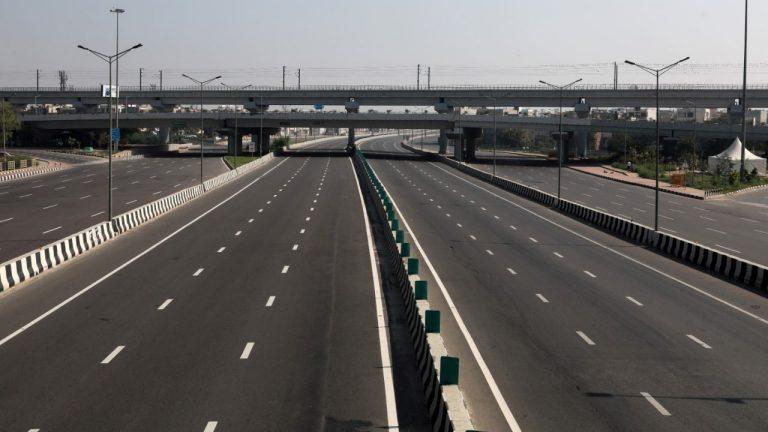
Tushar Mehta, the Solicitor General of India (SGI), said in an interview published in The Times of India on June 1 that his controversial reference to “vultures” was not aimed at journalists but at “speech warriors” who did “nothing to help migrant workers but focused only on a few dark spots”. On 28 May, during a hearing on migrant workers, the SGI told the Supreme Court of India (SC) that “the prophets of doom” always spread “negativity, negativity, negativity”, have not shown “any courtesy to the nation” and “don’t have the patriotism to acknowledge that”.
On migrant workers:
With due courtesy, let us recall that two months ago, on 31 March, the SGI submitted the Union of India’s “status report” to the SC in response to Alakh Alok Srivastava v. Union of India, a writ petition (No. 469/2020) concerning the welfare of migrant labourers during the lockdown. The Union’s status report says, in para 41, that of about 4.14 crore migrant workers in the country, the “present bare foot migration which has taken place consists of—on a very rough estimate—5 to 6 lakhs persons across the country”. Further, para 42 of the status report says, “It is most important and crucial to point out at this juncture that this kind of migration by the migrant workers on their own [emphasis added] in large numbers, defeats the very object of preventive measures taken by the Central Government.”
The submission warns, “...migrant workers travelling barefoot or otherwise in large numbers inevitably and unknowingly defy the social distancing norm which is one of the globally accepted norms for preventing Covid-19 and put their lives and lives of others in danger (emphasis added)”.
It extends the warning to say that if the groups of people travelling together in large numbers are allowed to reach their villages in rural India, “then there is extreme and most likely possibility of their carrying Covid-19 infection” and “infecting the rural population...which has remained untouched so far.”
In the same affidavit, the SGI submitted before the SC that as on 31 March, there were no “migrants” still on the streets! The question is, who had monitored whether they were or were not? The SGI unquestionably admits that people had left for their homes but asserts that their migration had ended on 31 March. Is it that all the workers had reached their destinations? And how many? And why did they leave? Had the SC sought these answers, one would have had some confidence in the government’s efforts. However, did the government’s concerns, raised in paras 41 to 43, take into account 40 deaths that had taken place in the course of the migration, until then?
Let us return to 28 May again. On that day the SC had noted, “...large number can be seen on foot…Whenever a migrant is found walking on the road they will be taken to the camp at the earliest and help them with facilities.” To this, the SGI said, “But this might encourage more people to walk.” This same insensitivity on the part of the government stands in contrast to what the court had noted on 31 March, “The anxiety and fear of the migrant should be understood by the police and other authorities…We expect those concerned to appreciate the trepidation of the poor men, women and children and treat them with kindness.”
The government had also claimed, in para 36 of its status report, that “80 crore individuals i.e. roughly two-thirds of the population is to be provided 5 kg of food grains [rice and wheat] and 1 kg of pulses free of cost for next three months”. One has to humbly bear in mind that the amount of pulses barely matches the nutritional necessity, while that of the grains is only a third of what is needed for normal survival. And would this deserve “positivity”? What about other ingredients for food? In all of these, did not the Union government pass the burden on to the states without ever discussing with them the question of lockdown before imposing it with 4 hours’ notice?
Further, given that this migration could lead to future crisis in epidemic control, what was done to avert it? The very minimum would have been to rehabilitate the “barefoot migrants” in camps along the highways and get them tested for Covid-19, since the government itself considered them probable carriers of the infection. This was not done, and for two reasons: unconcern for their suffering and total unpreparedness. The government admits that there were 5-6 lakh people on the roads, yet one cannot guess how many days it would have taken to test them all, since India’s testing capacity at the end of March was only 4,000 per day and reached 17,000 only by 11 April.
On the other hand, by mid-April, India offered the Indian Army’s help to SAARC neighbours for conducting Covid-19 tests. That help was rejected, except by the Maldives, but did the government show similar preparedness to conduct such tests in India?
Preparedness:
The question of preparedness was the first part of the SGI’s submission on 31 March. He told the court (in para 4) that the central government has taken “quick and timely measures in anticipation of the potential crises reaching our country even before India had the first confirmed case.” Since a surge of positive cases on 23 and 24 March forced the government to enforce a lockdown, were there plans to increase the testing rate at a daily compounded rate of 15%, since that was the rate at which active cases had been growing from 5 March onwards until the lockdown? The SGI did not present any precise plan of action at that time.
On 11 April, the Indian Council of Medical Research (ICMR) reported that 17,143 tests had been conducted on the previous day, 10 April, of which 600 had tested positive. This 3.5% positive results shows that the number of tests were grossly inadequate. Even the increased testing facilities have not kept pace with the requirement. So much so that there are urgent pleas from the residents of Ahmedabad for patients to be tested and a display of serious unpreparedness.
A question thus remains unanswered: was the countrywide lockdown imposed to vanquish the Covid-19 disease in a 18-day war as described by the Prime Minister or was it to “strengthen health care facilities in states before sending back migrant workers,” as Amit Shah, the Home Minister, has now said in an interview with the News18 channel (published on June 1, two months into the lockdown)?
On healthcare facilities, Tushar Mehta had claimed before the SC (para 22 of the status report) that with the “collective efforts” of the centre and state governments, “1.35 lakh isolation beds have already been identified if such a need arises.” Again, the question is: how many new beds were actually created in the last last three months or is their number still 7,20,000 in government hospitals, of which 1.35 lakh have been set aside for Covid patients?
In an interview published on 29 May, the leading epidemiologist Dr T Jacob John, a retired professor of virology from Christian Medical College, Vellore, had this to say: “The time to expose workers safely was April 15. We knew then, the downturn [from lockdown] was very obvious but the epidemic was not being slowed down perceptibly. Between March 25 and April 15, the numbers grew 20 times. So we knew the lockdown was not perceptibly effective…”
What is more, when the ICMR declared in mid-April that infections were spreading through community transmission, the government took an aggressively denialistic mode although the country’s map was by then (15-16 April) dotted with 170 hotspots and 207 potential hotspots.
Even now, experts advise a multi-pronged attack against the spread of the virus. T Jacob John and MS Seshadri, medical director at the Thirumalai Mission Hospital in Ranipet, Tamil Nadu, penned on 3 June a warning published in the Hindu that a country “denies community transmission at its own peril”. The doctors exhort authorities, “Admitting community transmission does not lower the honour of mother India in the eyes of foreigners; on the contrary it boosts the sagging morale of health-care professionals, prevents avoidable loss of man power in the face of the epidemic, and preserves the integrity of the entire health-care system.” To say so does not mean these experts are indulging in “negativity”. Experiments with truth are meant to lead to Satyamev Jayate, and the battle against Covid-19 cannot be divorced from that.
The author is president, All India People’s Science Network. The views are personal.
Get the latest reports & analysis with people's perspective on Protests, movements & deep analytical videos, discussions of the current affairs in your Telegram app. Subscribe to NewsClick's Telegram channel & get Real-Time updates on stories, as they get published on our website.










